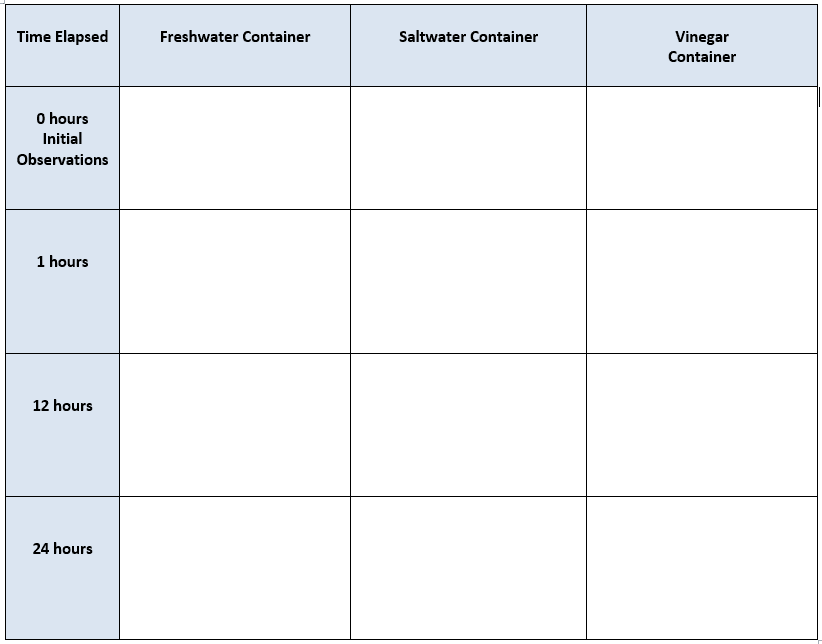Clams and Ocean Acidification
Description
Ocean Acidification is having a negative effect on animals such as clams, mussels, snails, and crabs. All of these animals create their own shells out of calcium, in a process called calcification. These calciferous shells are easily broken down, and will dissolve in acid very quickly. If carbon emissions continue to persist at rampant rates, and the ocean continues to grow more acidic, these kinds of invertebrates will not be able to survive.
See for yourself in this home experiment
Task
Materials:
- Empty shells from the beach (make sure these are empty and do not have living animals in them)
- Water
- Salt
- Vinegar
- 3 clear containers/glasses
Preparation:
1. Fill one container halfway with fresh water, one with salt water and one with vinegar. There should be enough solution in the container to completely submerge the shell.
Experiment:
Before you begin the experiment, make some observations about the shells. Record their colour, shape, texture, and durability (are they hard or flexible). You may wish to take pictures of the shells to help remember your observations.
At the same time, place one shell in each of the glasses. Leave the shells undisturbed for one hour, then record observations from each of the containers.
Leave the shells in the containers overnight (approximately 12 hours) and record observations again from each of the samples.
Leave the shells again until 24 hours have passed since the start of the experiment. Take your observations again, this time removing the shells from their containers. What do you notice now about the shells in each of the containers?
Observations:
- Are there any bubbles in the water
- Has there been any change to the colour of the shell
- Has there been any change to the shape of the shell.
- Has there been any change to the durability of the shell

Discussions:
1. How did the shell change during the 24 hours in the freshwater? In the salt water? In the vinegar?
2. How did the shell in the salt water (basic) compare to the shell in the vinegar (acidic)?
3. Why do clams and crabs have shells? What purpose to their serve for their survival?
3. How would the acidic solution affect a clam living in the ocean? What does a weakened shell mean for the clam?
Posted January 17, 2022 by Meighan Makarchuk

